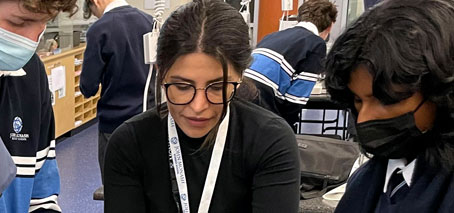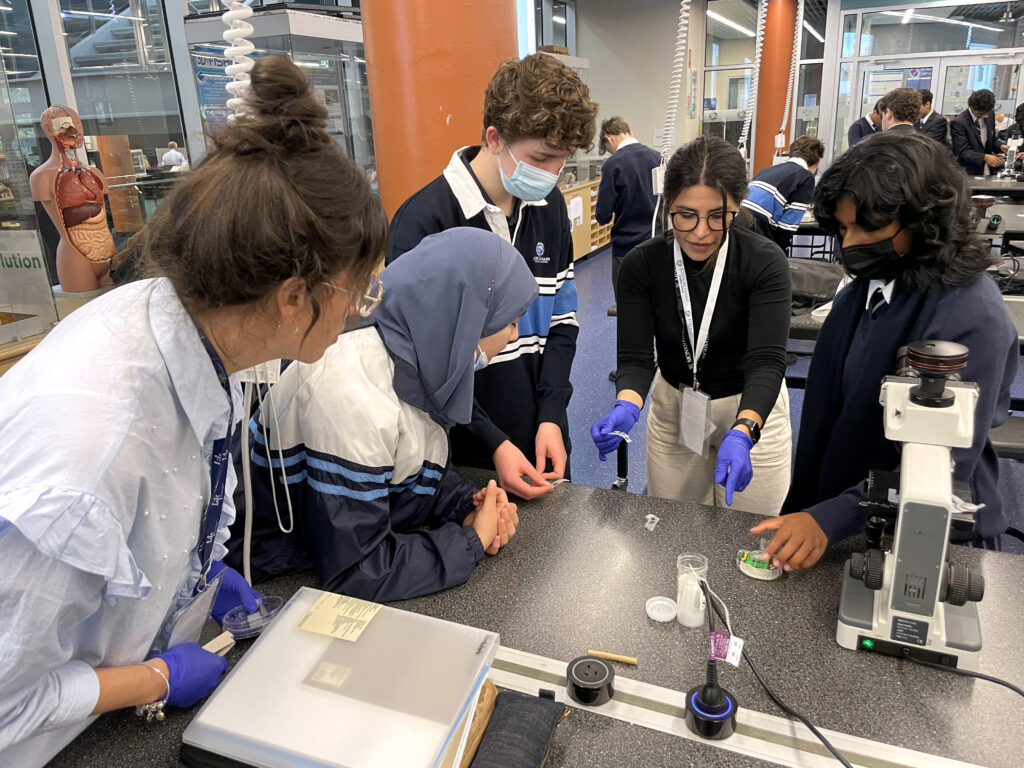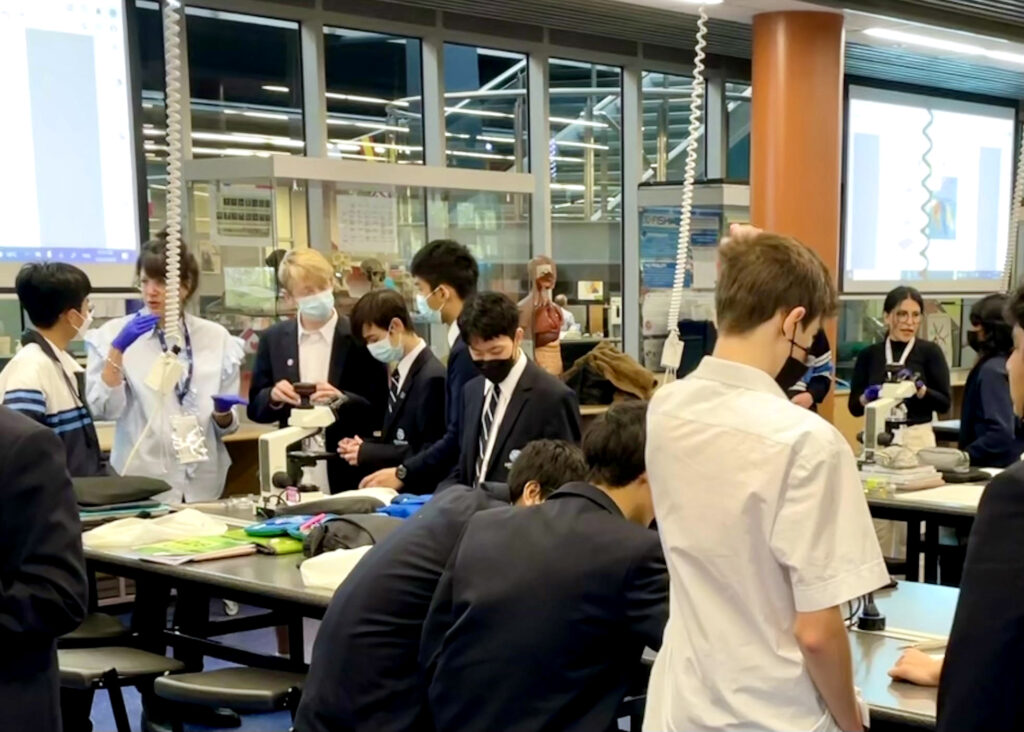Nobel-winning material science in the classroom
Gol Akhgar and Julie Karel (Monash) this month demonstrated graphene exfoliation with scotch-tape in the class, explaining the role of 2D materials in future beyond-CMOS electronics.
The lesson is part of FLEET’s ongoing year-10 future electronics unit at John Monash Science School, which builds up from atomic/quantum fundamentals to transistor functions, logic circuits and binary code… training Australia’s future computing and semiconductor experts.
A story in FLEET’s annual report also explains how the future-electronics unit has wider benefits in encouraging students (particularly girls) to study STEM subjects.
“The visible presence of female FLEET presenters exposes students to a more-diverse cast of physicists than the ‘pale, stale and male’ 19th-century gentlemen whose names and biographies are traditionally taught in physics classes,” says FLEET’s Errol Hunt. Student surveying has confirmed success of the elective unit in encouraging girls/other students to consider a future in physics, enabling female students to ‘see a place for themselves’.
“At my old school, subjects like psychology, physics, biology were more male-dominated subjects, and [it felt like] females shouldn’t be in those subjects. Seeing the female speakers from FLEET inspired me to consider physics, just because I could see now there’s a place for females in this field.” –student



